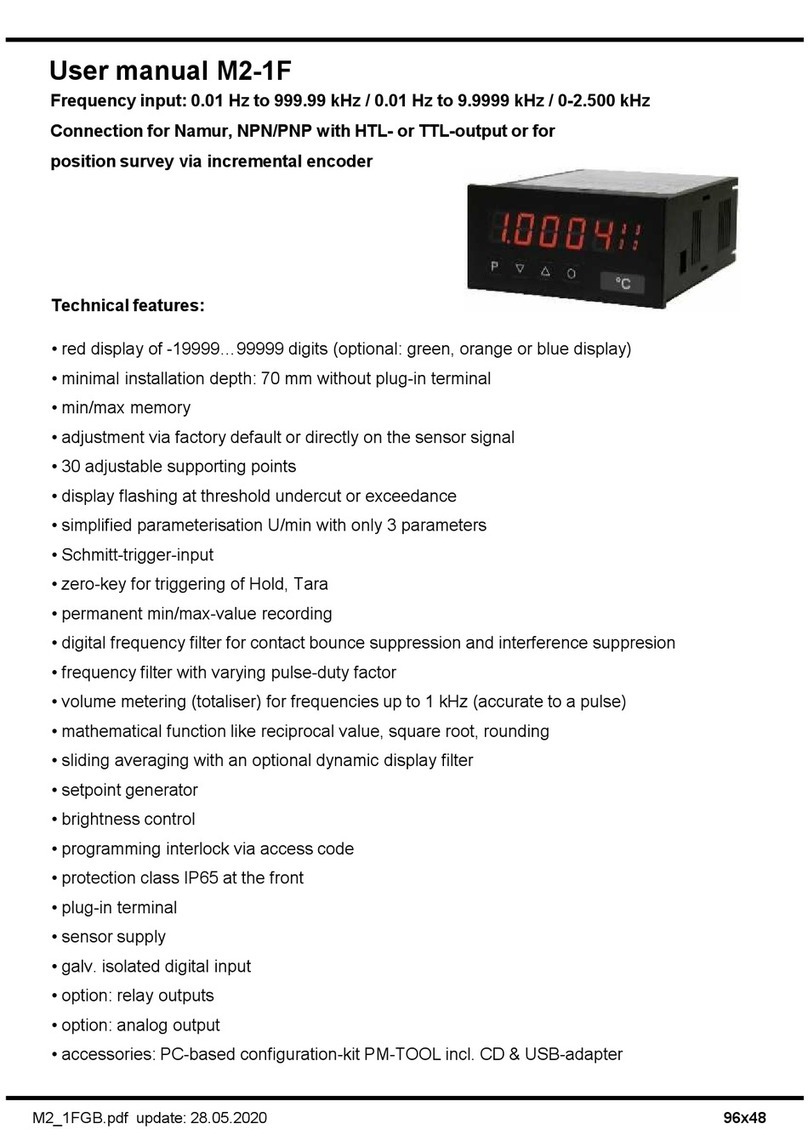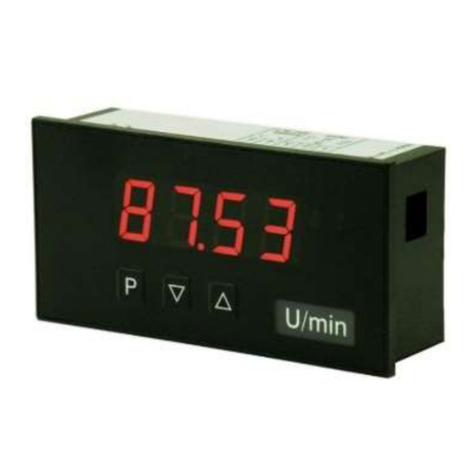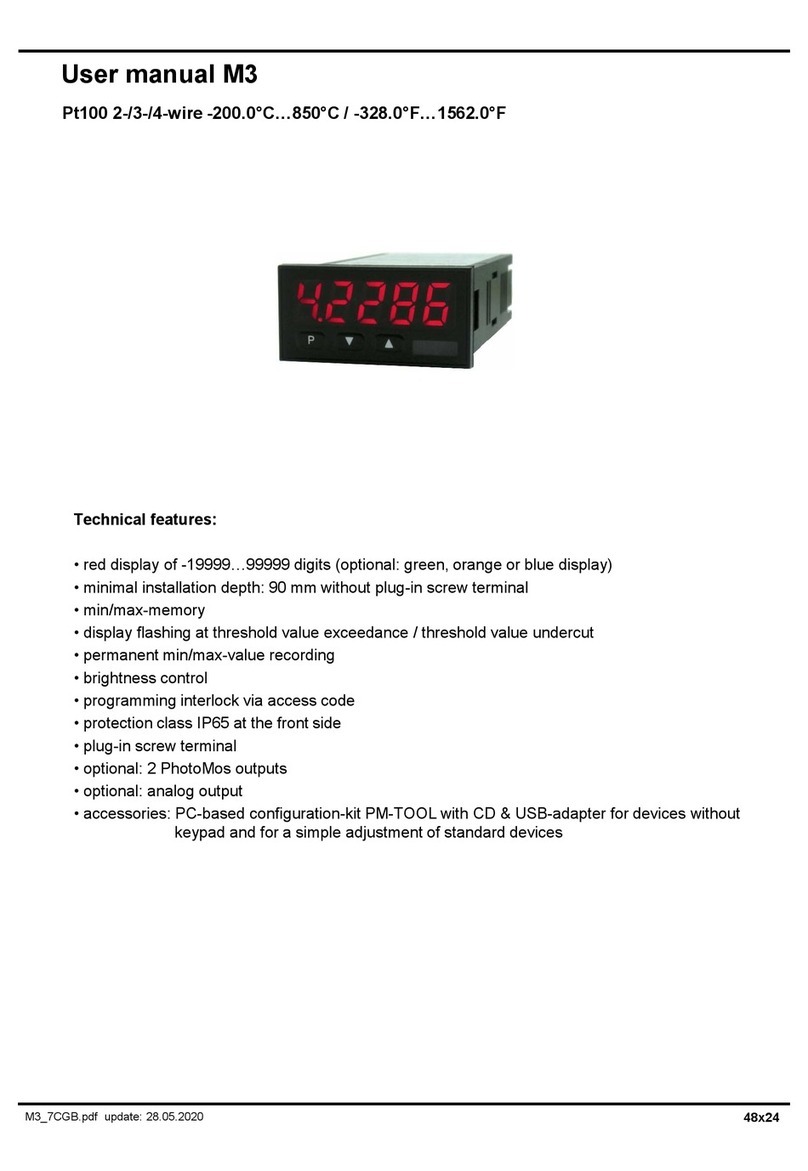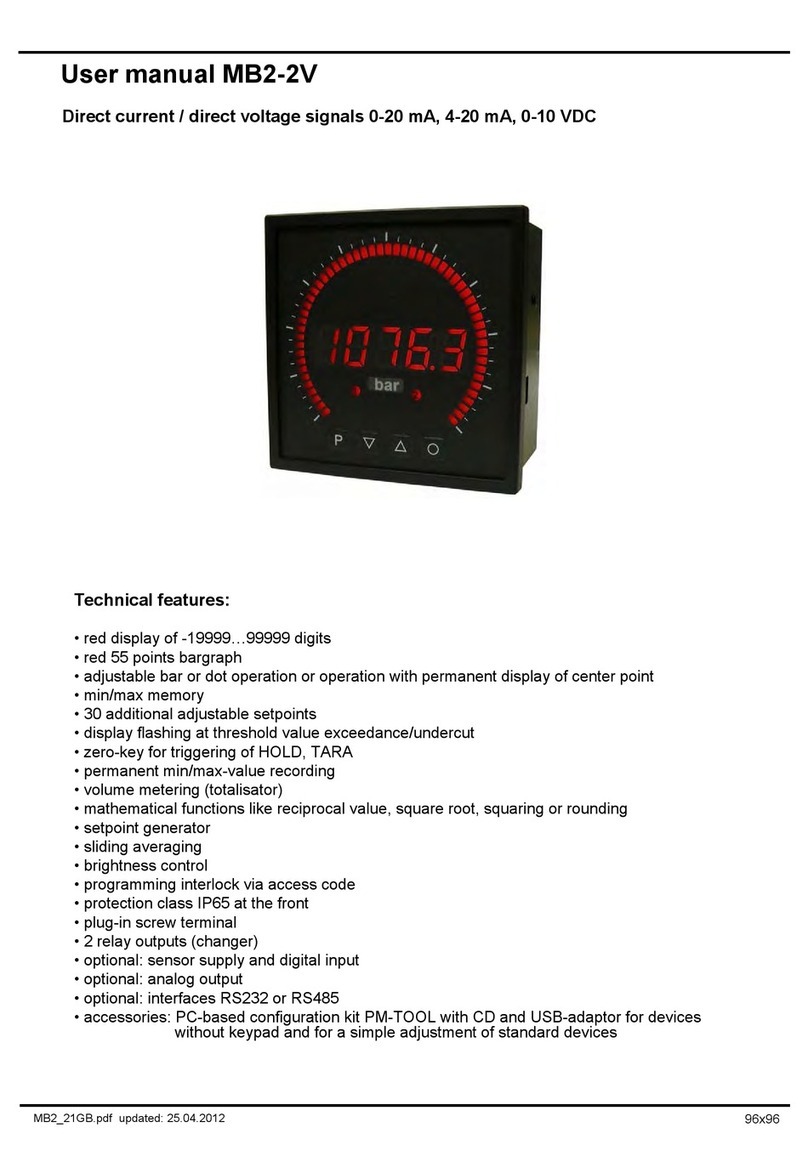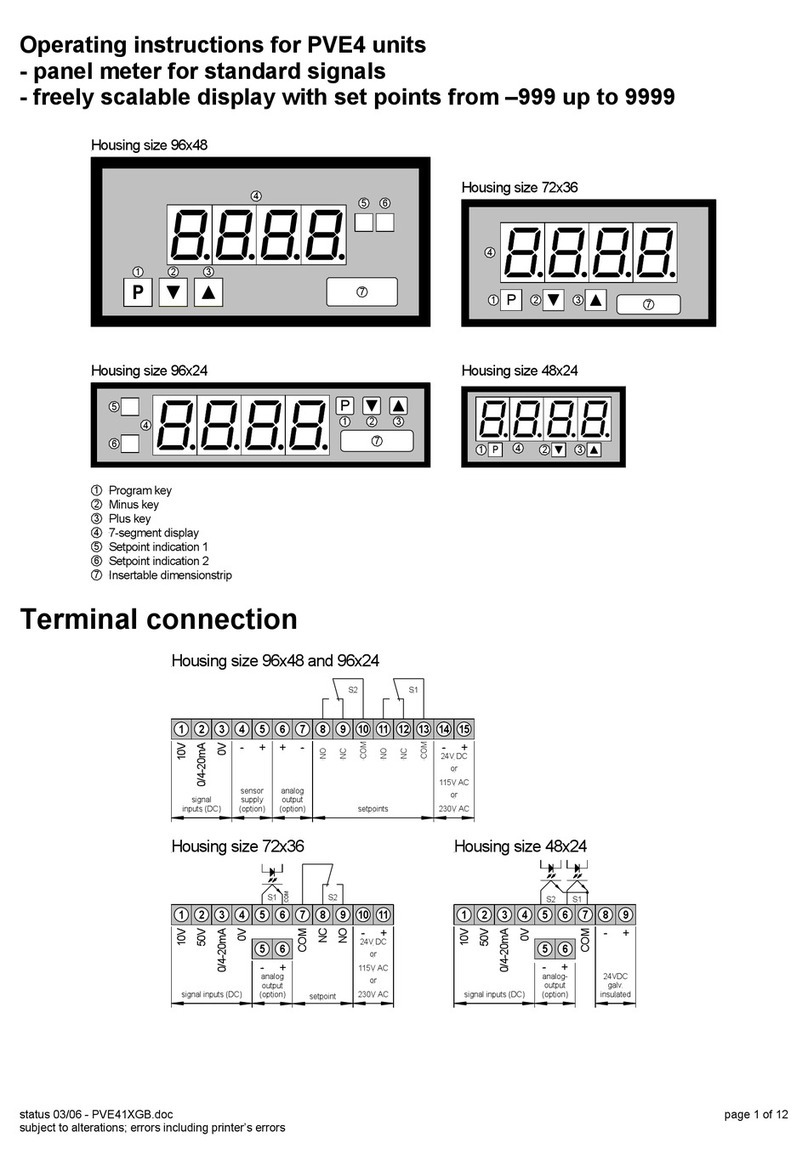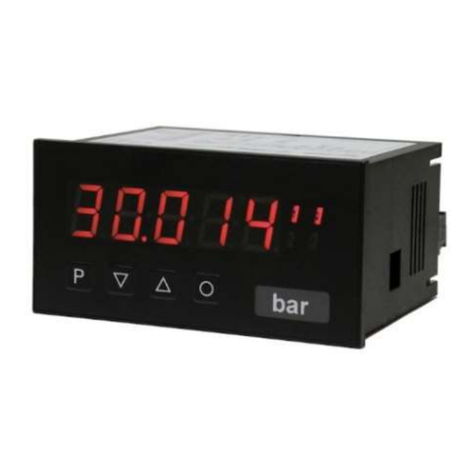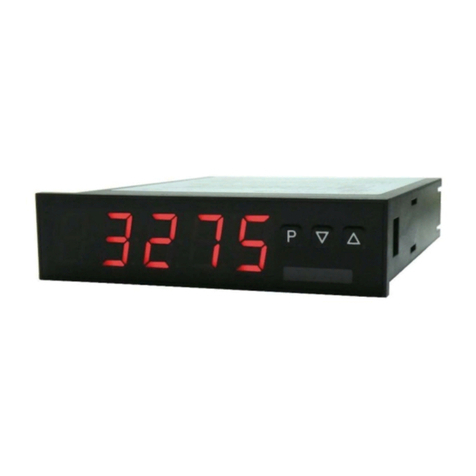1. Brief description
2
1. Brief description / 2. Safety advices
The panel meter instrument M3-34H is a 5-digit device for AC current / AC voltage signals (TRMS) and a
visual threshold value monitoring via the display. The configuration happens via three keys at the front or by
the optional PC software PM-TOOL. The integrated programming interlock prevents unrequested changes
of parameters and can be unlocked again with an individual code. Optional the following functions are
available: one analog output and interfaces for further evaluating in the unit.
With help of the two galvanic isolated setpoints (optional), free adjustable limit values can be controlled and
reported to a superior master display.
The electrical connection is done via plug-in terminals on the back side.
Selcetable functions like e.g. the recall of the min/max-value, an averaging of the measuring signals, a
nominal presetting or setpoint presetting, a direct threshold value regulation during operation mode and
further measuring setpoints for linearisation, complete the modern device concept.
2. Safety advices
Please read the following safety advice and the assembly chapter 2 before installation and keep it for future
reference.
Proper use
The M3-34H-device is designed for the evaluation and display of sensor signals.
Danger! Careless use or improper operation can result in
personal injury and/or cause damage to the equipment.
Control of the device
The panel meters are checked before dispatch and sent out in perfect condition. Should there be any visible
damage, we recommend close examination of the packaging. Please inform the supplier immediately of any
damage.
Installation
The M3-34H-device must be installed by a suitably qualified specialist (e.g. with a qualification in industrial
electronics).
Notes on installation
• There must be no magnetic or electric fields in the vicinity of the device, e.g. due to transformers, mobile
phones or electrostatic discharge.
• The fuse rating of the supply voltage should not exceed a value of 6A N.B. fuse.
• Do not install inductive consumers (relays, solenoid valves etc.) near the device and suppress any
interference with the aid of RC spark extinguishing combinations or free-wheeling diodes.
• Keep input, output and supply lines separate from one another and do not lay them parallel with each other.
Position “go” and “return lines” next to one another. Where possible use twisted pair. So, you receive best
measuring results.
• Screen off and twist sensor lines. Do not lay current-carrying lines in the vicinity. Connect the screening on
one side on a suitable potential equaliser (normally signal ground).
• The device is not suitable for installation in areas where there is a risk of explosion.
• Any electrical connection deviating from the connection diagram can endanger human life and/or can destroy
the equipment.
• The terminal area of the devices is part of the service. Here electrostatic discharge needs to be avoided.
Attention! High voltages can cause dangerous body currents.
• Galvanic isolated potentials within one complex need to be placed on a appropriate point (normally earth or
machines ground). So, a lower disturbance sensibility against impacted energy can be reached and
dangerous potentials, that can occur on long lines or due to faulty wiring, can be avoided.



